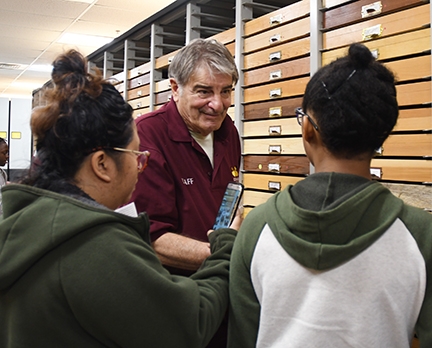
- "What is entomology?"
Quick answer: insect science. - "What is a monarch?"
Quick answer: An orange and black butterfly that's the icon of the butterfly world.
Science. It's all around us, and learning about science should and must be a priority.
The STEM (Science, Technology, Engineering and Math) Teaching Tools site asks: "Why do we need to teach science in elementary school?"
"Our future depends on a public that can use science for personal decision-making and to participate in civic, political, and cultural discussions related to science," wrote co-authors Julie Cafarella, Amber McCulloch and Philip Bell in January 2017.
"Though we have national goals for science education, science is often pushed to the side—particularly at the elementary school level. There are multiple reasons for science to be a core part of elementary school learning. It can support: (a) development of a knowledgeable citizenry, (b) meaningful learning of language and mathematics, (c) wonderment about how the natural world works, and (d) preparation for STEM-related careers."
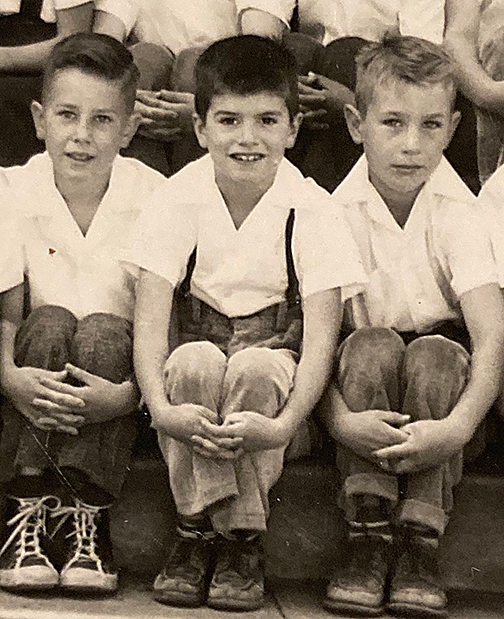
In yesterday's Bug Squad blog, we wrote about naturalist Greg Kareofelas, associate at the Bohart Museum of Entomology, University of California, Davis, and his nearly month-long project of rearing a monarch egg to adulthood. He named the butterfly "Ruth," after Supreme Court Justice Ruth Bader Ginsburg, a champion of equal rights, who died Sept.19 after a long bout with cancer.
“You're Ruth,” Kareofelas told her as she dried her wings on Sept. 19. “You're alive. You're going to fly.”
What sparked Greg's interest in monarchs and entomology? An elementary school classroom. In 1951, when he was seven years old and a second grade student at the Holy Rosary Academy, Woodland, he wrote and illustrated a wonderful little booklet on the monarch life cycle. His teacher graded it an "A" (we would have, too!).
The booklet, now almost 70 years old, provides an insight into the scientific creativity and wonderment of a young student; his dedicated teacher, Adele Dennison, who apparently delighted in sharing her love of science; and his proud mother, Delores Kareofelas (1923-2018), who treasured the booklet. "She saved it, and all my report cards, too," Greg said.
As the STEM website says:
- Scientific literacy starts in early childhood and continues through elementary school. Scientific knowledge is necessary to fully participate in human culture and democracy—especially as it becomes more technological. The future of our nation depends on a scientifically literate public.The new vision for science education emphasizes the need for consistent science instruction throughout a student's academic career. Scientific literacy is a developmental process that takes years of concerted effort to cultivate.
- Science learning takes significant time—but that time is not being provided. A recent study shows that science instructional time is decreasing in elementary school. Only 20% of K-3 students and 35% of students in grades 4-6 have access to daily science instruction. (See this report on teachers' practices around science instruction).
- Students are ready to reason about science in early childhood. Children enter elementary school with reasoning skills and perceptions of the natural world that provide a sound basis for science learning. A recent report calls for greater attention to monitoring instructional time in elementary science. Multidisciplinary, long-term science projects are often easier to do with students in elementary school years. Elementary science can promote narrow views of how science works. Efforts should be made to broaden what counts as science and engineering.
That means insects, too!
The Entomological Society of America (ESA) sponsors a Chrysalis Fund to foster "the future of entomology through grants to K-12 teachers and other educators who use insects in the classroom to get kids excited about science." See how to apply.
Entomologist and science writer Gwen Pearson, outreach coordinator at Purdue University's Department of Entomology, recently wrote an excellent piece on "Learning at Home with Bugs" for Entomology Today, an ESA publication.
"Kids are full of questions by nature," Pearson wrote, in urging parents to "resist the temptation to quickly provide answers. Use some of the prompts below to gently guide a child to think more deeply:
- What do you see?
- What do you think it is?
- Why do you think that's happening?
- What does that make you wonder about?"
GregKareofelas' keen interest in science and his acute observations glowed when he wrote the monarch booklet. He even added the gold band around the green chrysalis in his illustration. (See below)
And yes, butterflies still fascinate him.
Attached Images:
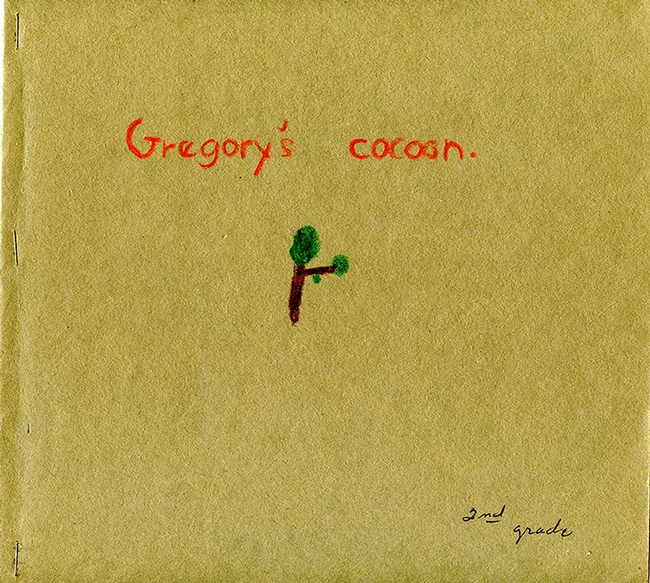
This the cover of second-grader Greg Kareofelas booklet on monarchs. He now serves as an associate at the Bohart Museum of Entomology, UC Davis, and as a tour guide for non-profit organizations.
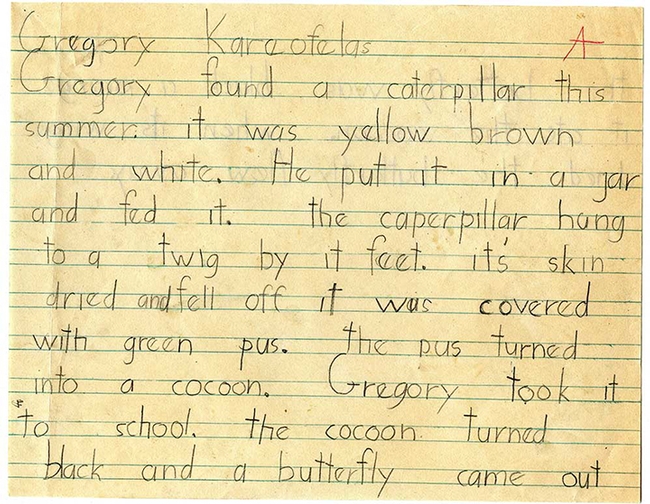
This is Page 1 of second-grader Greg Kareofelas booklet on monarchs.
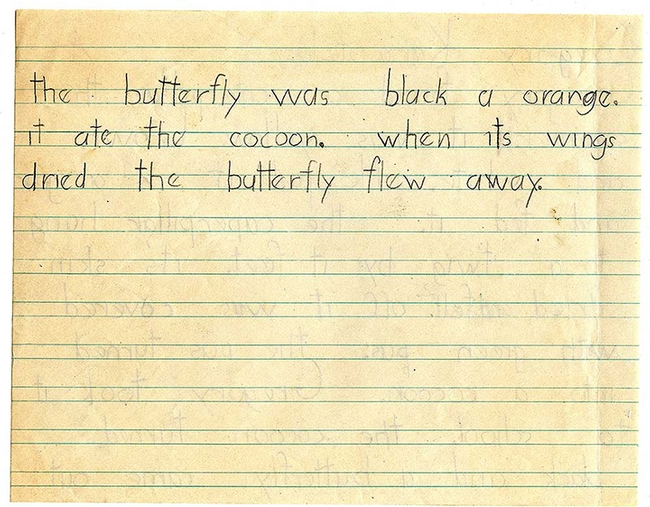
This is Page 2 of second-grader Greg Kareofelas booklet on monarchs.
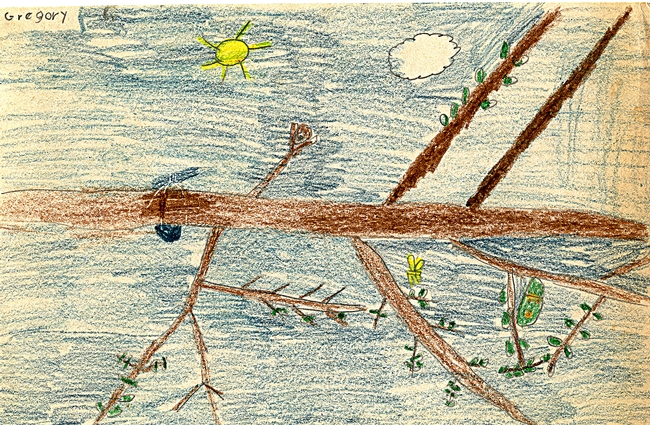
As a second-grader, Greg Kareofelas displayed a keen interest in science and acute observations about the monarch life cycle. This is his illustration in a monarch booklet.